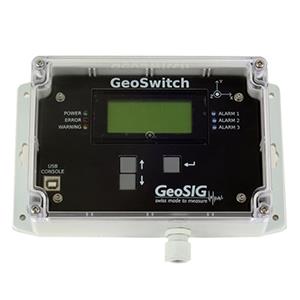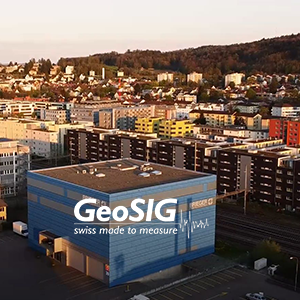GeoSIG AC-6x
Key Features
- Full Scale ± 2 g (0.5, 1, 3 or 4 g optional)
- Bandwidth DC to 100hZ optional to 250Hz
- Dynamic range > 120DB
- Offset stability
- Temperature and drift compensation
- Downhole version (AC-63-DH) is also available
- Robust suspension system
- Single Bolt Mounted Enclosure provides up to ± 10° of Levelling Adjustment
The AC-63, now a legacy product, was a reliable Force Balance Accelerometer based on the latest MEMS (Micro Electro-Mechanical Systems) technology. The sensor package was designed for applications regarding earthquake and structural monitoring and measuring. All these applications required a high dynamic, rugged sensor with minimum maintenance. The MEMS accelerometer had a variable capacitor design that was operated in a closed-loop configuration with a custom mixed-signal application-specific integrated circuit (ASIC).
The MEMS accelerometer was a wafer stack composed of four individual wafers bonded together. Within the inner two wafers of the stack, and suspended by silicon springs, was a moving structure called the proof-mass. This formed a differential variable capacitance between the surfaces of the moving proof-mass and the fixed caps. As the accelerometer was subjected to vibration, the proof-mass moved between the fixed plates which, in turn, caused a change in the differential capacitance. The DC response allowed the sensor to be easily repaired, tilt tested or recalibrated in the field. With the help of the TEST LINE the AC-63 accelerometer could be completely tested assuring proper operation and accurate acceleration measurement.
The MEMS accelerometer was a wafer stack composed of four individual wafers bonded together. Within the inner two wafers of the stack, and suspended by silicon springs, was a moving structure called the proof-mass. This formed a differential variable capacitance between the surfaces of the moving proof-mass and the fixed caps. As the accelerometer was subjected to vibration, the proof-mass moved between the fixed plates which, in turn, caused a change in the differential capacitance. The DC response allowed the sensor to be easily repaired, tilt tested or recalibrated in the field. With the help of the TEST LINE the AC-63 accelerometer could be completely tested assuring proper operation and accurate acceleration measurement.
































